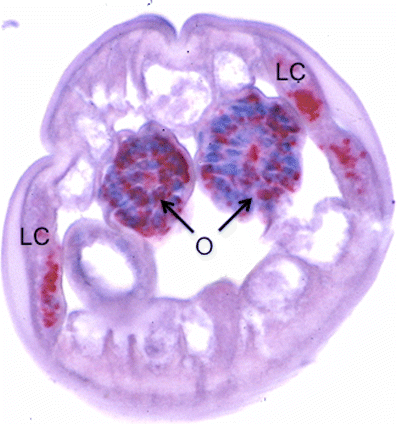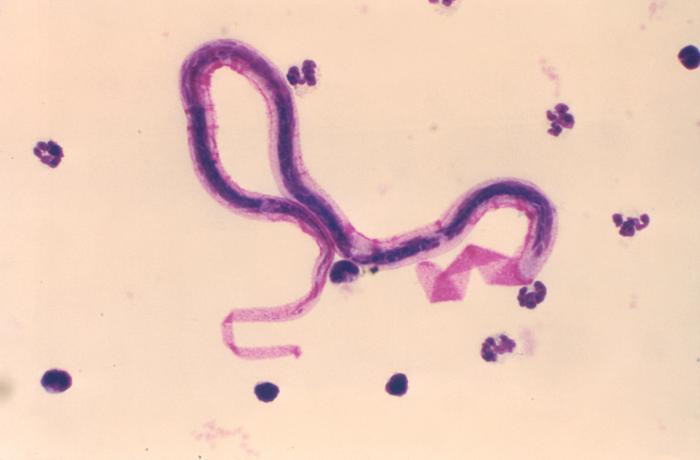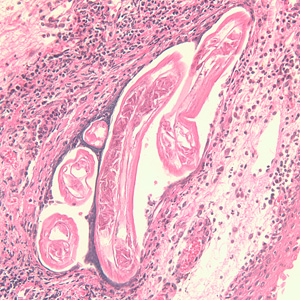Form and Function
Adaptations
B. malayi has an endosymbiont in it. An endosymbiont is an
organism that lives within another organism, creating an
endosymbiosis. It appears that B. malayi has evolved due to the
presence of its bacterial endosymbiont Wolbachia. The
adaptations appear to have created a mutualistic relationship
between Brugia malayi and Wolbachia (Ghedin
et al 2007).
 Wolbachia
lives in both male and female adult B. malayi, with many of them
found in the female reproductive system. Wolbachia is widely found
here in order to get a headstart on infecting the young, developing embryos
(Slatko et al 2010).
Wolbachia
lives in both male and female adult B. malayi, with many of them
found in the female reproductive system. Wolbachia is widely found
here in order to get a headstart on infecting the young, developing embryos
(Slatko et al 2010).
Brugia malayi supplies amino acids to Wolbachia, and Wolbachia
supplies many different nucleotides for B. malayi. Wolbachia is
necessary for B. malayi to survive and reproduce (Foster
et al
2005).
Without the adaptations to form a mutualistic relationship,
Wolbachia would act as a parasite to Brugia malayi, taking its
nutrients and leaving it with nothing.
Above image: A cross section of a female adult B. malayi. LC stands for lateral cord and O stands for ovary. The red coloring is the Wolbachia endosymbiont.
Form and Function
Because B. malayi have only longitudinal muscles, they move in
an S shape motion. Female adults are 50mm on average, which is
double the average of male adults (25mm) (Stanford 2008). This
allows for the male to wrap around the female when they are
ready for reproduction.

 Above
left image:
microfilarial
stage of
Brugia malayi. Above right image: Cross section of
Brugia species taken from a lymph node.
Above
left image:
microfilarial
stage of
Brugia malayi. Above right image: Cross section of
Brugia species taken from a lymph node.
Two different forms of B. malayi can be found in the body. The
first is considered the ‘periodic’ form because the
microfilariae appear periodically in the blood stream. This form
of the microfilariae are nocturnal and can usually be found from
10pm-2am. The second form of B. malayi is ‘subperiodic’ because
the microfilariae are found in the blood of the host throughout
the day (ADW 2003). Of course, periodic vs subperiodic means
nothing when you've got a parasite floating around in your
blood.